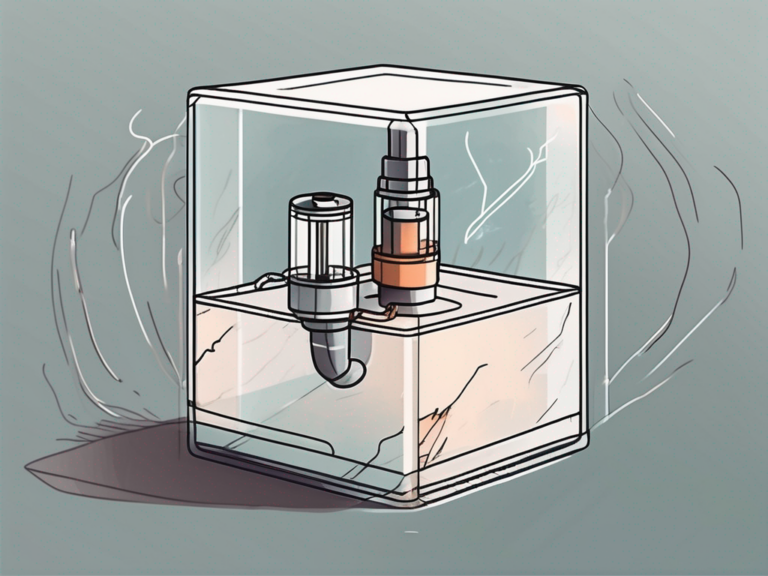Understanding the Vagus Nerve: Function, Location, and Common Conditions
As someone who has studied the human body extensively, I can attest to the incredible complexity and interconnectedness of its various systems and organs. One such component that often goes unnoticed is the vagus nerve. Despite its relatively hidden nature, the vagus nerve plays a crucial role in regulating numerous bodily functions and has been the subject of much scientific curiosity in recent years.The vagus nerve plays a crucial role in regulating the body’s autonomic functions, such as breathing, heart rate, and digestion. It is the longest cranial nerve in the body, extending from the brainstem to the abdomen and branching out to various organs along the way. This extensive reach allows the vagus nerve to communicate important information between the brain and the rest of the body, helping to maintain homeostasis and overall well-being.In addition to its role in regulating physical functions, the vagus nerve also plays a significant part in the mind-body connection. Research has shown that stimulating the vagus nerve can have a calming effect on the nervous system, reducing stress and anxiety levels. This has led to the development of techniques such as vagus nerve stimulation, which is used to treat conditions like epilepsy and depression. By understanding the intricate workings of the vagus nerve, we can gain valuable insights into how our bodies and minds are interconnected, paving the way for new approaches to health and wellness.
Unveiling the Functions of the Vagus Nerve
Exploring the Vital Functions of the Vagus Nerve
One of the primary roles of the vagus nerve is to regulate the parasympathetic nervous system, which is responsible for promoting relaxation and maintaining homeostasis within the body. By stimulating the release of acetylcholine, a neurotransmitter, the vagus nerve helps reduce heart rate, lower blood pressure, and enhance digestion.
The Parasympathetic Nervous System: A Closer Look
The parasympathetic nervous system, often referred to as the “rest and digest” system, works in contrast to the sympathetic nervous system, which controls the body’s “fight or flight” response. With the vagus nerve as its main contributor, the parasympathetic system promotes rest, relaxation, and conservation of energy.
The vagus nerve also plays a critical role in regulating inflammation and immune responses in the body. Research has shown that proper activation of the vagus nerve can help mitigate excessive inflammation, making it a potential therapeutic target for various autoimmune diseases.
Neurotransmitter Regulation by the Vagus Nerve
In addition to its role in acetylcholine release, the vagus nerve is also involved in the regulation of other neurotransmitters such as serotonin and dopamine. These neurotransmitters play key roles in mood regulation, appetite control, and overall emotional well-being. Therefore, the vagus nerve indirectly influences mental health through its modulation of neurotransmitter levels.
Vagus Nerve Stimulation Techniques
Researchers and healthcare professionals have been exploring various techniques to stimulate the vagus nerve for therapeutic purposes. One such method is transcutaneous vagus nerve stimulation (tVNS), which involves applying a mild electrical current to the auricular branch of the vagus nerve through the skin of the outer ear. This non-invasive approach has shown promising results in the treatment of depression, anxiety, and chronic pain.
Navigating the Anatomy of the Vagus Nerve
Locating the Vagus Nerve in the Human Body
The vagus nerve, also known as the 10th cranial nerve, is a crucial component of the parasympathetic nervous system. It originates at the base of the brain, specifically the medulla oblongata, and descends through the neck and chest, making its way through various structures along the path. This wandering nerve is aptly named, as “vagus” in Latin means “wandering.” Its extensive reach allows it to innervate key organs such as the heart, lungs, stomach, and intestines, playing a vital role in regulating essential bodily functions like heart rate, digestion, and breathing.
Exploring the Intricate Branches of the Vagus Nerve
Upon reaching its target organs, the vagus nerve intricately branches out into a complex network of nerve fibers, forming a sophisticated communication system within the body. These branches not only transmit signals from the brain to the organs but also carry sensory information back to the brain, facilitating a continuous feedback loop that helps maintain homeostasis. The vagus nerve’s branches exhibit a high degree of specialization, allowing for precise control over various physiological processes in different organ systems. This level of fine-tuned regulation ensures seamless coordination between the autonomic nervous system and the organs it innervates, contributing to overall health and well-being.
Exploring Vagus Nerve Conditions and Disorders
Common Conditions Impacting the Vagus Nerve
While the vagus nerve is a resilient and adaptable component of our nervous system, it can sometimes be affected by certain conditions or disorders. Some common examples include vagus nerve compression, vagal neuropathy, and vagus nerve damage resulting from surgeries or trauma.
Let’s delve deeper into these conditions to gain a better understanding. Vagus nerve compression occurs when there is excessive pressure on the nerve, often due to surrounding structures such as blood vessels or tumors. This compression can lead to symptoms such as hoarseness, difficulty swallowing, and even episodes of fainting.
Vagal neuropathy, on the other hand, refers to damage or dysfunction of the vagus nerve itself. This can be caused by various factors, including diabetes, infections, or autoimmune disorders. Individuals with vagal neuropathy may experience symptoms such as heart palpitations, digestive issues, and vocal cord paralysis.
Recognizing the Symptoms of Vagus Nerve Dysfunction
When the vagus nerve is compromised, it can result in a range of symptoms. These may include irregular heart rhythms, gastrointestinal disturbances, difficulty with swallowing or speaking, and even mood disorders such as anxiety or depression.
It is important to note that symptoms can vary widely depending on the specific condition affecting the vagus nerve. For instance, individuals with vagus nerve compression may experience dizziness and lightheadedness, while those with vagal neuropathy may have trouble regulating their body temperature or experience excessive sweating.
Understanding Vagus Nerve Stimulation Therapy
Vagus nerve stimulation (VNS) therapy is a treatment option often used for individuals with medication-resistant epilepsy or depression. By implanting a small device that electrically stimulates the vagus nerve, this therapy aims to regulate abnormal brain activity and improve symptoms.
Although the exact mechanisms of VNS therapy are still being studied, it is believed that the electrical impulses delivered to the vagus nerve can modulate neurotransmitter release and promote neuroplasticity, leading to a reduction in seizure activity or an improvement in mood.
Diagnostic Methods for Vagus Nerve Disorders
When diagnosing vagus nerve disorders, healthcare professionals employ various methods, such as imaging tests, nerve conduction studies, and consultation with neurologists or specialists trained in autonomic nervous system disorders. Accurate diagnosis is crucial in determining appropriate treatment strategies.
Imaging tests, such as magnetic resonance imaging (MRI), can help visualize the vagus nerve and identify any structural abnormalities or compression. Nerve conduction studies, on the other hand, involve measuring the electrical signals transmitted along the nerve to assess its function. These tests can provide valuable insights into the extent of nerve damage or dysfunction.
In conclusion, the vagus nerve is a pivotal component of the parasympathetic nervous system, influencing numerous bodily functions and playing a crucial role in maintaining overall well-being. By understanding its functions, location, and common conditions, we can appreciate the significance of this often-overlooked nerve and its impact on our daily lives. While further research continues to expand our knowledge, it is important to consult medical professionals and specialists for any concerns or symptoms related to the vagus nerve, as individualized and expert care is essential for accurate diagnosis and appropriate treatment.






